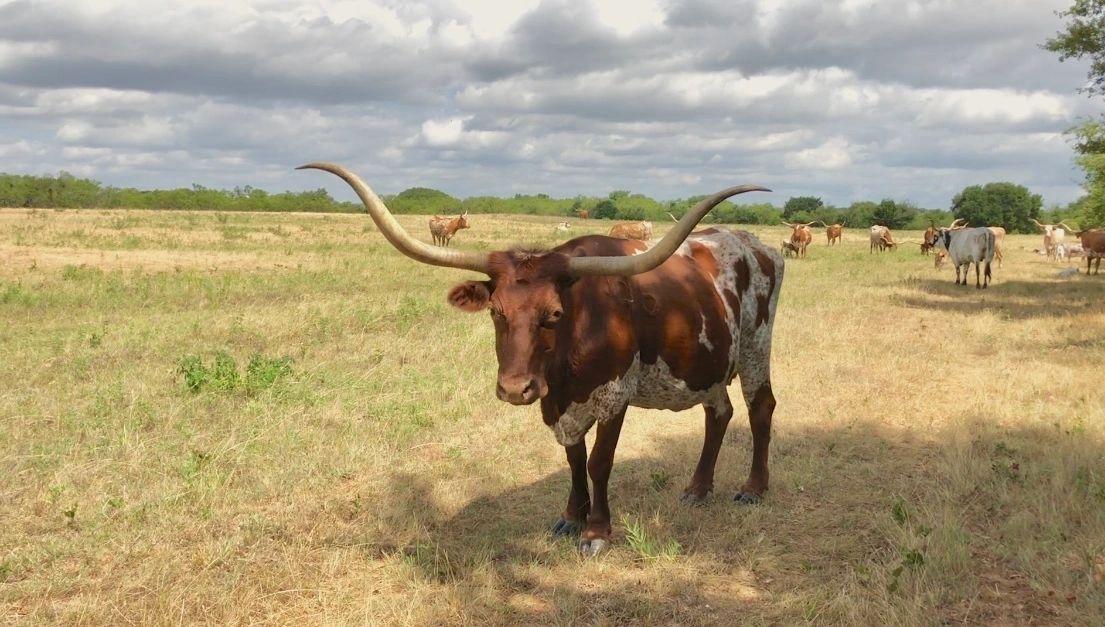We love Texas Longhorns. We have had our Texas Longhorn cattle for over a decade. Our experience with them has endeared us even more to their unique and quirky personalities as well as their cohesiveness as a herd. Over the years we have become more familiar with their bovine behaviors and the advantages of ranching with Texas longhorns. Here are some our Texas longhorn cattle herd’s behavior and the advantages as we perceive them:
11 Habits of our Texas Longhorn cattle herd: highlighting the advantages
( for more on the Advantages of Texas longhorn cattle visit GVRlonghorns.com/advantages)
1. Our Longhorn cattle love routine. Depending on the season and the pasture, they will follow a similar pattern every day – feeding, ruminating, resting and walking the same paths. Their behavior is fairly predictable. An advantage of the herd’s predictability, becomes evident particularly when we need to find them or work them.
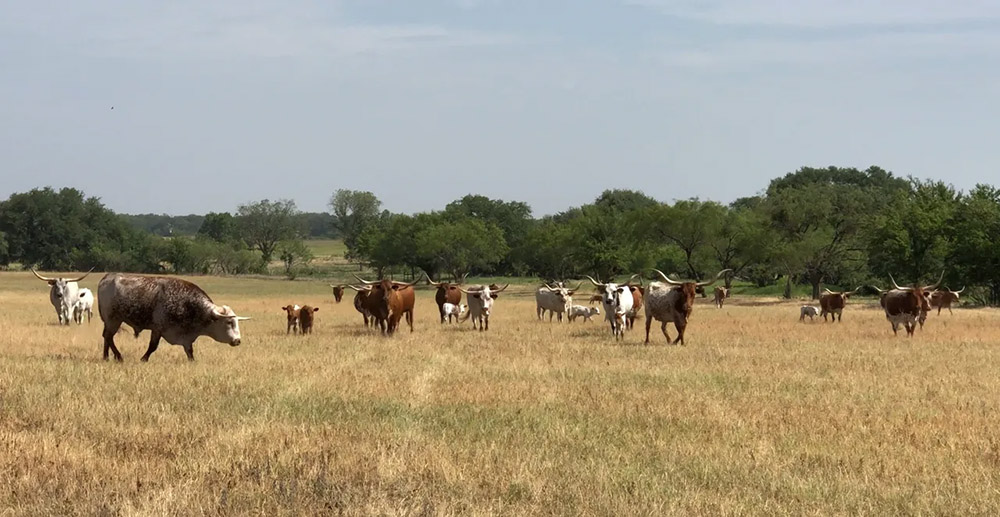
2. Longhorn Cattle have great memories. They remember specific experiences and specific people. Their intelligence is something we take advantage of. We try to stay calm with our herd at all times. Furthermore, we believe that our Texas longhorn cattle are alert to their surroundings and more relaxed in areas that they are familiar with.
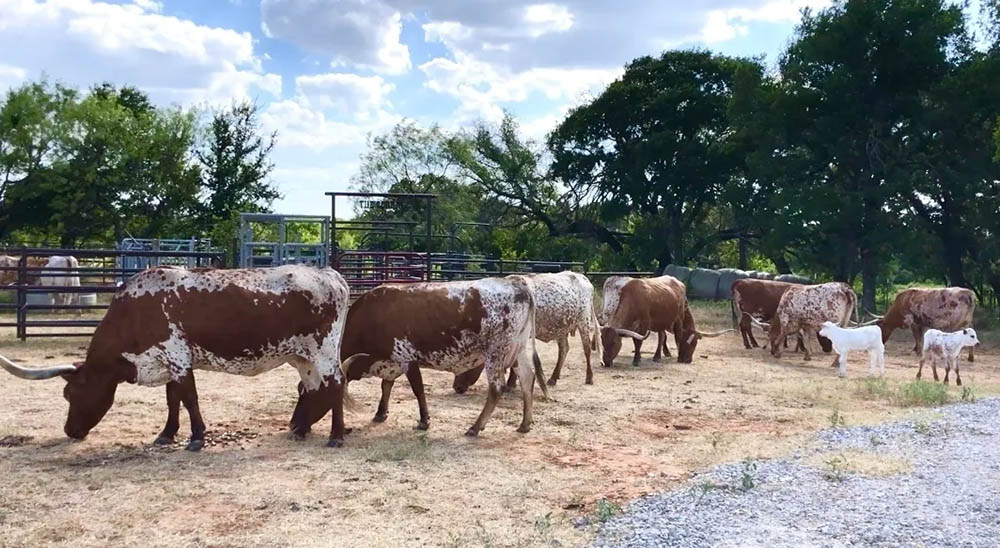
3. Texas Longhorn Cattle like to be together. They have a herd mentality, and are more secure as a community. They prefer to hang out collectively as a group or in clusters within earshot of each other. Like humans, they have ‘friends’ they prefer and others that they avoid.

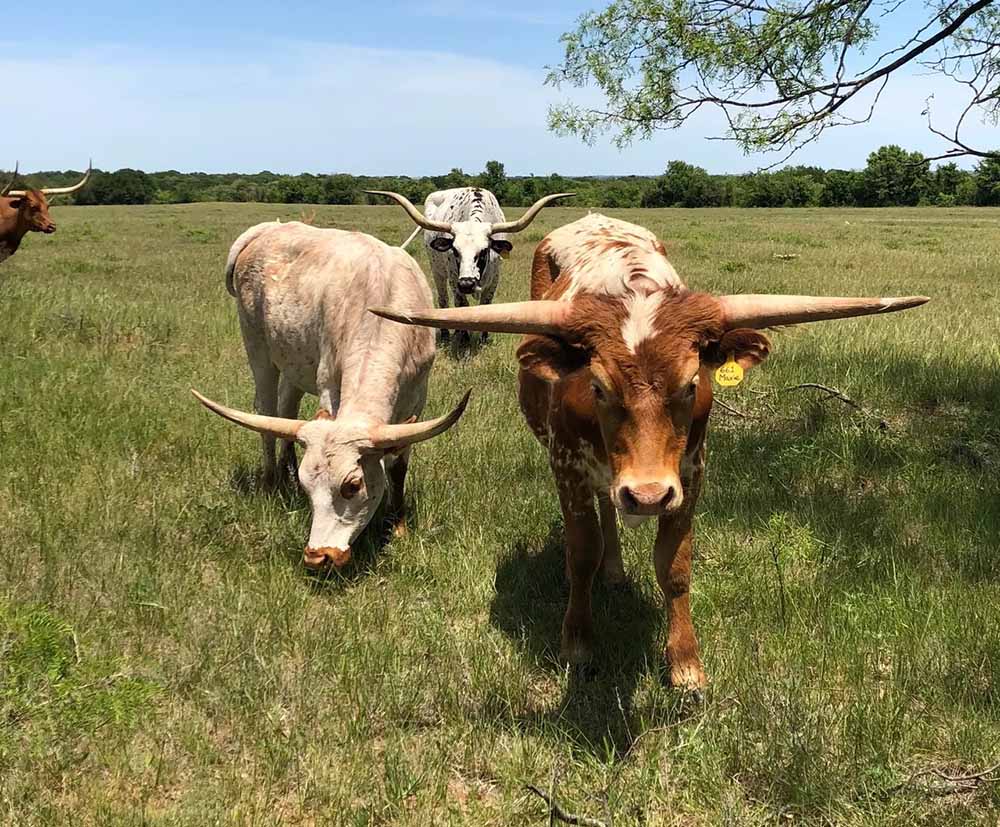
3. Occasionally an individual will stray from the herd. Expectant mothers will purposefully leave to calf in isolation. An advantage of breeding Texas longhorn cattle is their innate ease of calving. Texas longhorn cows rarely need assistance giving birth to calves. An added advantage of this characteristic is the reduced stress the birthing mother will have to endure. An added advantage is that the herd maintains a stress free atmosphere, even during calving season. However, it’s good to remember that an animal corralled alone will almost always show signs of stress.

4.Equilibrium is maintained when everybody sticks to the social rules. There is an obvious social ranking which is influenced by factors like age, sex, weight, horn length and the time each individual Texas longhorn may have spent on a farm. Our dominant cows have most, if not all, of the above characteristics.

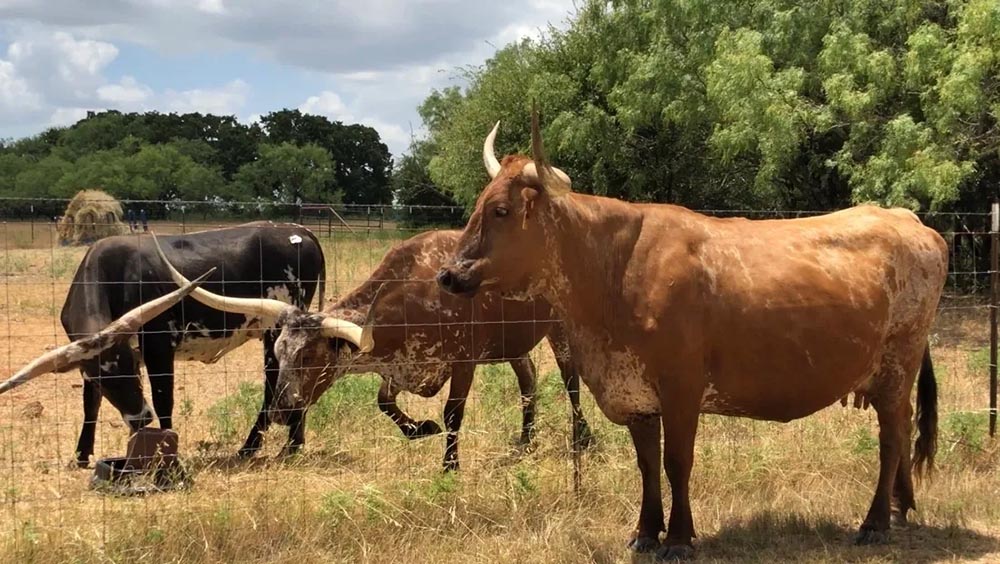
5. The older ladies keep away from the dominant ones and keep to themselves on the perimeters whilst still maintaining a herd mentality. Calamity Louise is our oldest Texas longhorn cow. She is over 20 years of age and has remained productive throughout her life. Her longevity and continued productivity is an advantage to us as Texas longhorn cattle breeders.
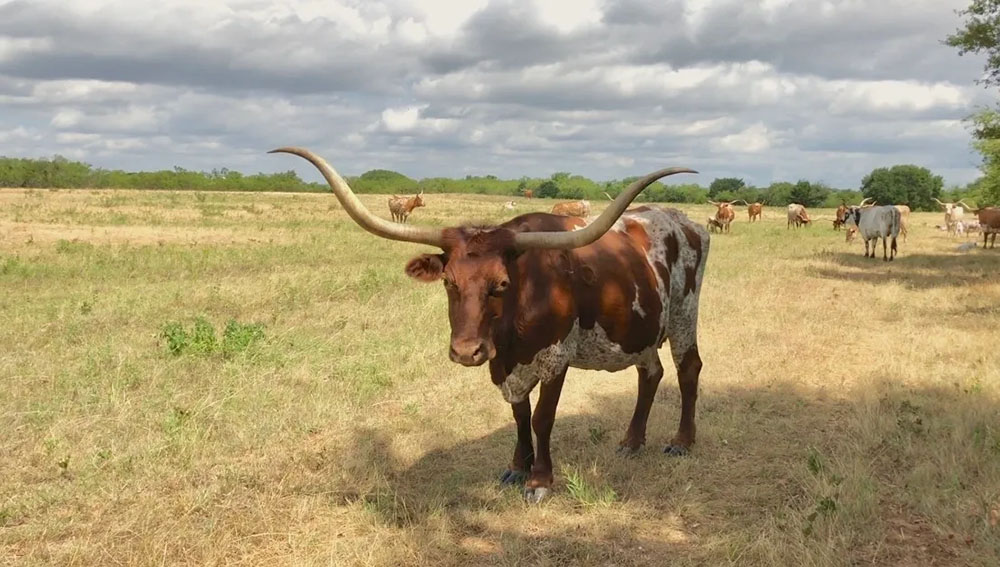
6. The ladies that have lived here for the shortest time know their place with the dominant longhorn cows irrespective of whether or not they held dominant positions at their previous home. We find it advantageous to know the alliances our cows have with each other, especially when we work the herd, need to corral individual animals or need to separate certain longhorn herds from others. It’s an advantage that no one Texas longhorn in our herd looks like another. They all have different markings and horn formations and are easy to tell apart.
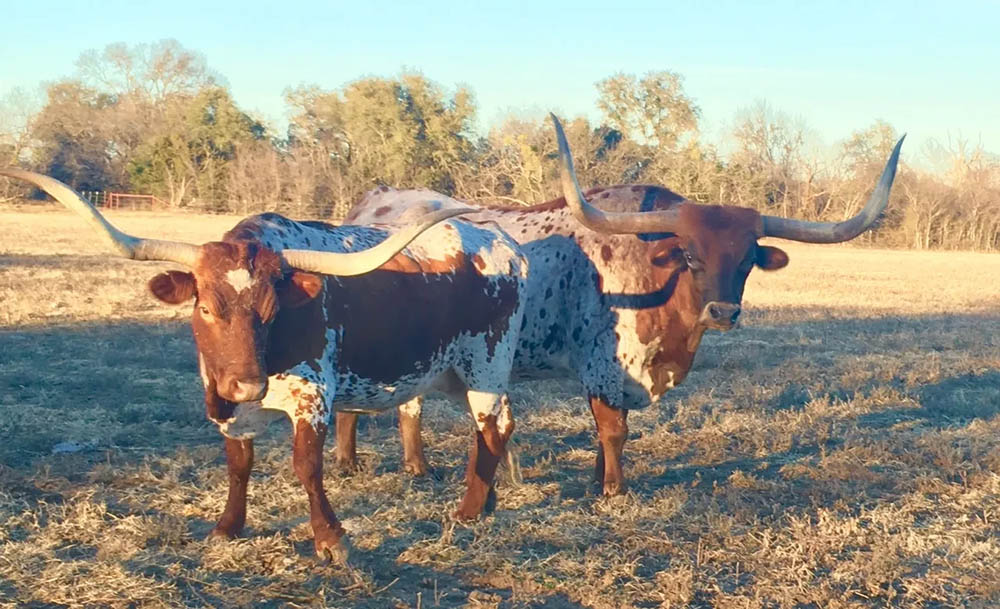
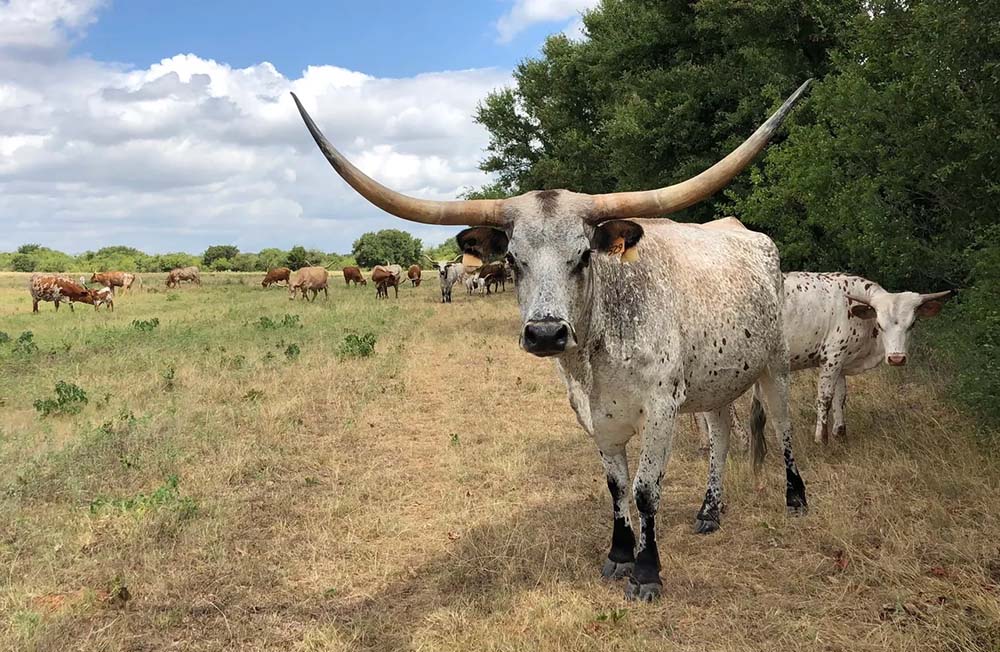
7. Some longhorn cows have specific roles. Often one of the mothers is assigned, or assigns herself to look after all or some of the babies whilst the others take a break. Young ones also seem to lend a hand with even younger calves when it comes to baby sitting. As a result, the babies are never alone, a huge advantage and a relief when we hear the coyote’s sing.
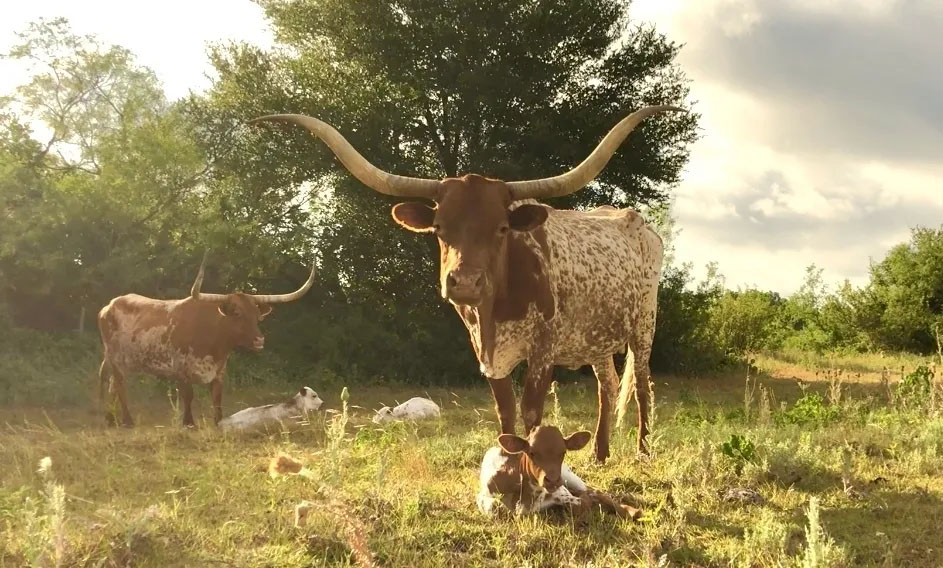
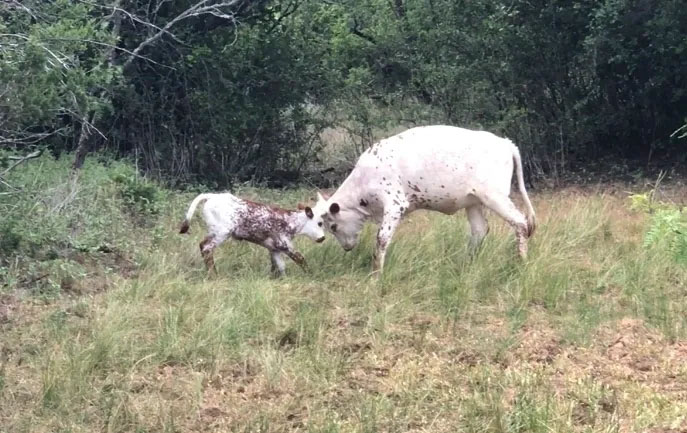
8. Another important role in the longhorn herd is the leader. As with elephants and buffalo, in our herd the longhorn cows lead the way. Knowing who fills the lead role helps when herding everyone from one area to another. Getting the lead longhorn cow to follow will ensure we get our work done faster. No need to spell out this advantage!
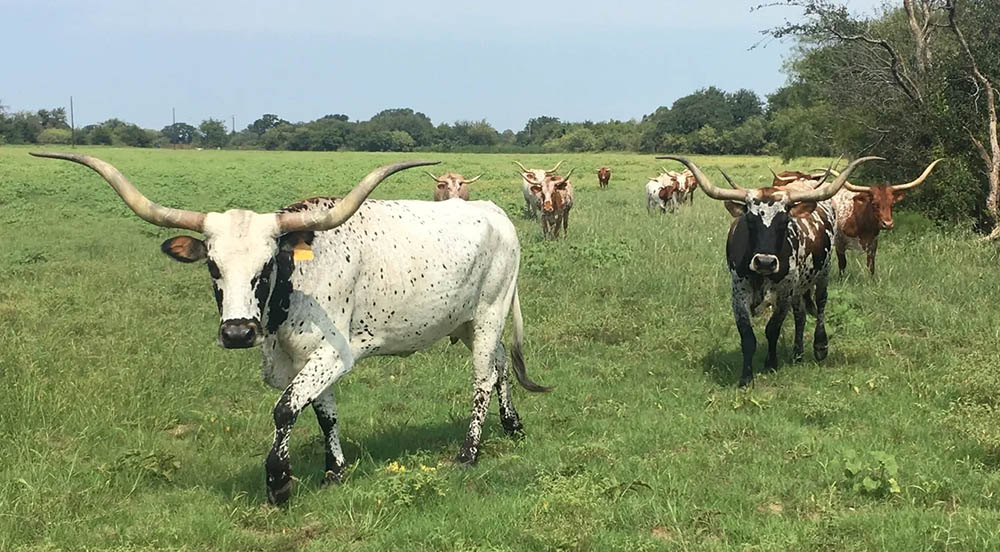
9. Family ties remain strong. Mother|daughter/steer bonds remain evident even when babies grow up and have their own. Siblings also seem to move in and out of their familial units. They seem to care for each other as much as we care for them.
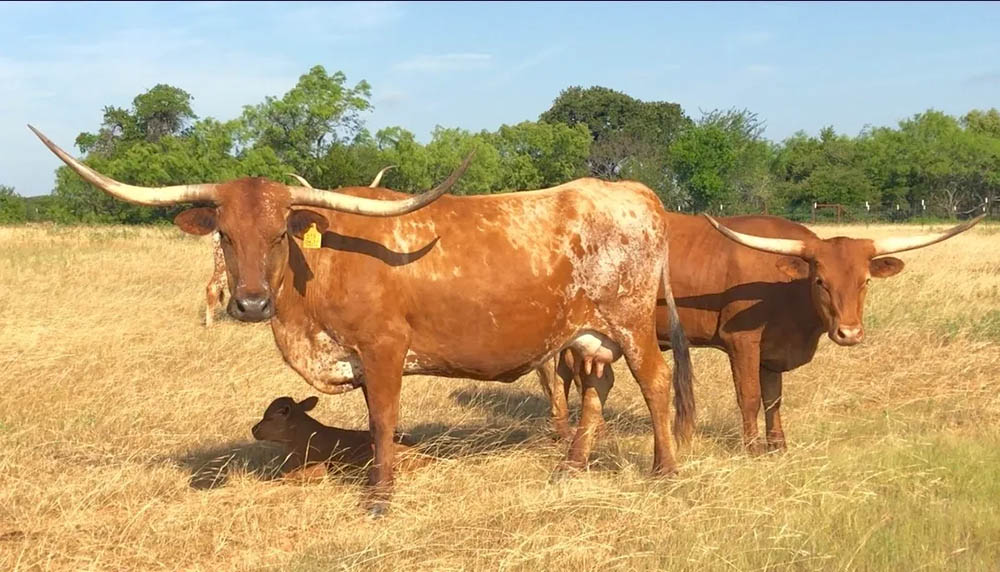
10. New comers introduced into our longhorn herd have lower rankings irrespective of their size and age, that is, if they are females. Our latest longhorn bull owned the pastures on arrival. He is currently a lone bull and did not have to spar with competition.
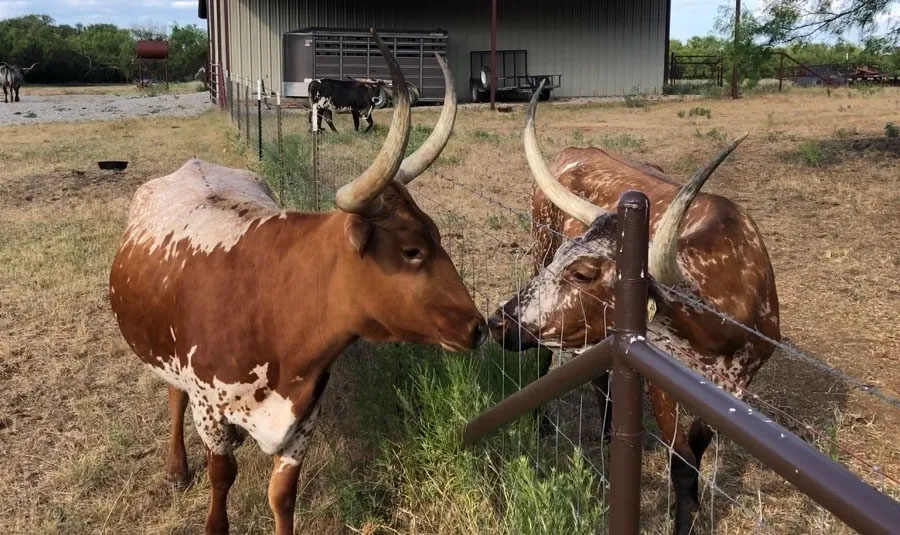
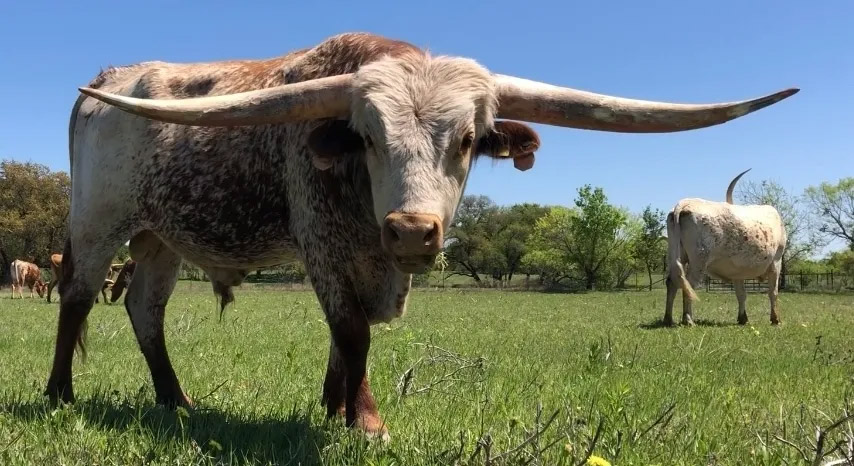
11. All rules are made to be broken. During calving season, the rules change to protect the babies. The longhorn mothers generally herd and form clusters away from the main herd. If a longhorn calf is ever threatened, mom will fiercely protect her child but so will any other Texas longhorn cow in the area. At night, longhorn calves sleep in open areas, generally surrounded by our Texas longhorn cows. Their long horns come in handy when protecting their young. We have owned our ranch for almost 20 years. To date, we have not lost an animal to a coyote or to a wild pig even though we are surrounded by both – most certainly an added advantage to having cattle with long horns.

Each one of our Texas Longhorn Cattle brings something special to the herd. As a community they are fascinating. We learn more about them everyday. We never imagined how much joy these longhorn cattle would bring into our lives. Our Texas longhorn cattle have specific habits they seem to use to their advantage and which are advantageous to us too.
For more on the ADVANTAGES of Texas longhorn cattle, visit our GVRlonghorns.com/advantages
For your own Texas longhorn cattle visit our SALEBARN
We also enjoy hearing from you. Let us know what you think of our Texas Longhorn blog and if you are also lucky enough to have longhorn cattle, do they behave similarly/differently or in ways that stand out?
Thank you for reading our blog. We look forward to hearing from you either via email GVRlonghorns@gmail.com or on Facebook @GVRlonghorns
For similar Texas longhorn Farm BLOG posts
visit our RANCH BLOG
For some cute TEXAS LONGHORN CATTLE videos at GVRlonghorns.com
Disclaimer: The material noted above is based on our hands- on experience as farmers, as well as our observations of our own cattle over the years. We have done and continue to do extensive research in order to maintain our herd‘s optimum health. We respect our animals and would not approach cattle we do not know. All opinions and statements made on our website are meant as guidelines only. We are not trained specialists in animal behavior, nor are we qualified veterinarians and we urge you to consult a specialist with your concerns.
Content of this blog belongs to GVR Longhorns LLC and may not be copied in any form. ©GVRlonghorns.com All rights reserved.

